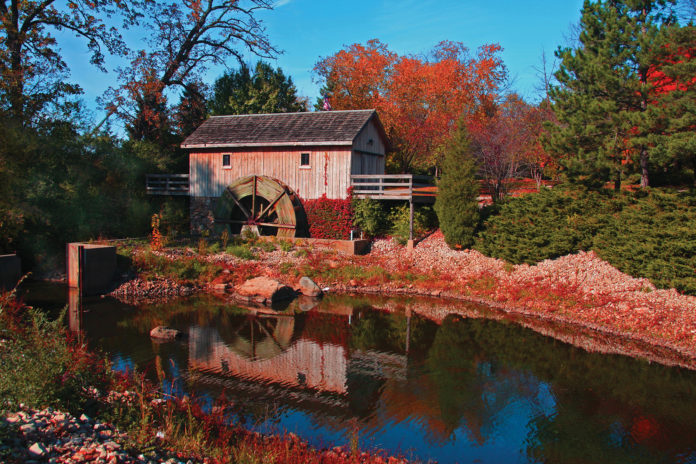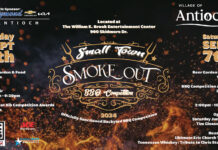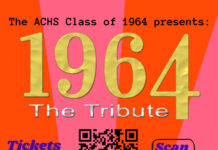The Village of Antioch is fortunate in its ability to display tremendous history through the ongoing preservation of its historic buildings and parks. Residents can learn a great deal about the social and cultural history through conversations with friends and family, a visit to the local museum, or a historic memento such as a vintage postcard depicting a scene. However, there is a one-of-a-kind historic treasure within walking distance to downtown that offers a deeper look at the rich history of Antioch—the Hiram Buttrick Sawmill.
Hometown historic
Located in Gage Brothers Park on Cunningham Drive, and along Sequoit Creek, sits the Hiram Buttrick Sawmill. The park is named after Darius and Thomas Gage, early settlers who built a cabin on the site. This historic gem is styled after the original mill and is one of the most photographed sites in Lake County.
In 1839 when Hiram Buttrick, an early settler and visionary built the original sawmill, it was an ideal location along the winding creek, fed from Little Silver and Loon Lakes. Mills of that time were of great importance and a true economic driver. It proved to be a reliable revenue stream since early homes were built of logs, and numerous locomotive furnaces were fed thousands of cords of wood. Later, a nearby steam gristmill was added by John Elliott, in addition to a church and school. The rest, as they say, is history.
Unique and historical spots, like the Hiram Buttrick Sawmill, add a valuable depth to things available here; it’s multi-generational, educational, a great way to spend time outdoors, a community gathering space, and free. It pulls you in, keeps you coming back, and provides economic opportunities for Antioch and surrounding areas.
Michael Garrigan, Village of Antioch Community Development Director
The replica sawmill as it stands today was built in 1976, as a way for the Village of Antioch to commemorate the nation’s bicentennial. The unique build took more than two years and was constructed approximately 500 feet from the original sawmill. Fortunately, builders were able to salvage the existing pilings. Each stone along the pond’s edge was set by hand. The project was spearheaded by the Antioch Bicentennial Commission, with William Brook as the chairman.
The undertaking fostered a great sense of pride and enthusiasm throughout the community, with residents donating countless hours of time and talent. Many lent their time to fundraising efforts as well, including Mayor Bob Wilton and Mayor Mike Haley, respectively, in their efforts to honor the earliest residents of the Village of Antioch. Antioch’s former Village Clerk, Marilyn Sterbenz, brought the idea forth and suggested a replica be made. At the helm of design and construction were Walter “Walt” Shepard, former superintendent of public works (project director), Richard “Dick” Stroner, former building commissioner (project assistant), and Frank Angelotti (engineer). According to Walt, when he spoke to the Sawmill News, “roughly 350 gave their labor over weekends, and more than 1,000 people participated by donating materials and funds to the project.”1
This past April, Gage Brothers Park was once again front-and-center as one of the largest local community organizations, NorthBridge Church, helped to design and construct a unique outdoor classroom. The educational arena includes a custom oversized chalkboard, platform stage, and durable rows of bench seating. Built by hand as part of NorthBridge’s 2019 ShareFest initiative, the space is used by local school groups to foster a unique environment in which they can learn the importance of environmental stewardship.
Historic and economic impact
Placemaking in a community helps to define how design and development affect the quality of life. This remains a key factor in where people are choosing to live and open the doors to new businesses. In a digital age, it’s easy to forget about the value found in personal, face-to-face connections. The residents of Antioch notably appreciate opportunities to come together as a community at the It’s Thursdays Concerts Series, Main Street parades, or to enjoy a cup of coffee at the corner café. Community members get (and stay) connected in real, physical spaces. Walkable neighborhoods including older and historic buildings, have seen a surge in interest.2
About the site
The Hiram Buttrick Sawmill sits in Gage Brothers Park, just downstream (or a stone’s throw) from the original sawmill. Much of the material used—timber, beams, wooden pegs, boards, pulleys, shafts, and gear was salvaged from abandoned sawmills and buildings. The barn wood used came from an old barn in Kenosha County, making this a multi-community endeavor. The creek’s dam creates a one-quarter-acre pond. An 18-foot diameter, non-operational waterwheel adorns the side. When it was in operation, the nearly three-ton wheel provided enough power to saw logs 14 inches in diameter. The building’s exterior and grounds are a popular location for pictures and memory-making throughout the seasons. Wedding parties, school groups, and local tourists come to enjoy its peace and tranquility.
The 4.4-acre site is part of a network of community parks within the Village of Antioch, managed by the Parks and Recreation Department. Gage Brothers Park is open daily, sunrise to sunset. Highlights include a paved path encircling an arboretum comprised of more than 80 trees, all donated by residents. There is a large totem pole created as an Eagle Scout project in recognition of Native American heritage and the Potawatomi tribes that once made this area home. A small adjacent multi-purpose building, known as the “Scout House,” provides scheduled space for summer camps, classroom learning, and community programs. Street parking is available and there is additional public parking nearby. The interior of the sawmill is not currently assessable. Discussions for expanded use are underway.
What’s ahead?
The Hiram Buttrick Sawmill is a great blueprint; its beginning and ongoing story are a perfect backdrop for embracing the past and looking to the future. Looking ahead is exciting. Later this fall, a community-wide ceremony will highlight the historic building and its iconic history. Future generations will enjoy the next momentous “look back” in 2078, when the buried 100-year-old time capsule will be unearthed. Updates for this fall’s event can be found online at antioch.il.gov.
1. Sue Nasenbery, Because so many chipped in…Sawmill more than beautiful (Sawmill News, special Antioch News insert, July 28, 1978), 1,16.
2. Americawalks.org (A Good Investment – The Benefits of Walkable Communities)














